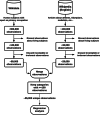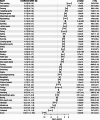Observational Study
. 2025 Apr;47(2):1397-1409.
doi: 10.1007/s11357-024-01307-9. Epub 2024 Aug 12.
Affiliations
- PMID: 39129051
- PMCID: PMC11979035
- DOI: 10.1007/s11357-024-01307-9
Observational Study
Abdullah Altulea et al. Geroscience. 2025 Apr.
Abstract
The human lifespan is influenced by various factors, with physical activity being a significant contributor. Despite the clear benefit of exercise on health and longevity, the association between different types of sports and lifespan is yet to be considered. Accordingly, we aimed to study this association in a large international cohort of former athletes using a robust linear regression model. We collected data on athletes from public sources, accumulating a total of 95,210 observations, 95.5% of which were accounted for by males. The dataset represented athletes born between 1862 and 2002 from 183 countries across 44 sports disciplines. We calculated the change in lifespan by measuring the difference in age between athletes and the corresponding reference populations, while accounting for variations caused by sex, year of death, and country. The results revealed that various sports impacted lifespan differently, with male athletes being more likely to experience benefits from sports than female athletes. Among male athletes, pole vaulting and gymnastics were linked to the highest extension in lifespan (8.4 years, 95% CI [6.8, 9.9] and 8.2 years, 95% CI [7.4, 9], respectively), while volleyball and sumo wrestling were the most negatively associated with lifespan (- 5.4 years, 95% CI [- 7, - 3.8]; - 9.8 years, 95% CI [- 11, - 8.6], respectively). The association between lifespan and popular team sports in males was positive for cricket, rowing, baseball, water polo, Australian rules, hurling, lacrosse, field hockey, minimal for rugby, canoeing and kayaking, basketball, gridiron football, and football (soccer), and negative for handball and volleyball. Racquet sports (i.e., tennis and badminton) exhibited a consistent and positive association in both male and female athletes, as shown by an extended lifespan of up to 5.7 years in males (95% CI [5, 6.5]) and 2.8 years in females (95% CI [1.8, 3.9]). Although lacking conclusive evidence, we theorize that the observed results may be attributed to the aerobic and anaerobic characteristics of each sport, with mixed sports yielding the maximum benefits for the lifespan. While results from female athletes should be cautiously interpreted, our study highlights the complex interplay between sports and lifespan and contributes to the growing body of knowledge on the multifaceted relationship between physical activity and human longevity.
Keywords: Lifestyle; Longevity; Sport.
© 2024. The Author(s).
Conflict of interest statement
Declarations. Competing interests: M.D. is a co-founder and shareholder of Cleara Biotech and scientific advisor for Oisin Biotechnologies, Unifarco, and Rubedo Lifesciences. The other authors have no conflicts of interest to declare.
Figures
 Fig. 1
Fig. 1
Flow chart depicting the data collection process
 Fig. 2
Fig. 2
Association between various sports and changes in lifespan (age Δ) in male athletes. Coefficient values represent the average change in lifespan in years compared with the reference male populations. Percentage was calculated based on the total number of male athletes. Adjusted R-squared = 0.06216. n.s. indicates statistically non-significant results
 Fig. 3
Fig. 3
Association between various sports and changes in lifespan (age Δ) in female athletes. Coefficient values represent the average change in lifespan in years compared to the reference female populations. Compared with the male athletes, several categories were omitted because of the low number of observations. Percentage was calculated based on the total number of female athletes. Adjusted R-squared = 0.03529. n.s. indicates statistically non-significant results
Similar articles
-
A taste of ambrosia: Do Olympic medalists live longer than Olympic losers?
Kovbasiuk A, Ciechanowski L, Jemielniak D. Kovbasiuk A, et al. Scand J Public Health. 2025 Feb;53(1):8-14. doi: 10.1177/14034948231219833. Epub 2024 Jan 5. Scand J Public Health. 2025. PMID: 38180004
-
Zvan M, Zenic N, Sekulic D, Cubela M, Lesnik B. Zvan M, et al. J Relig Health. 2017 Aug;56(4):1348-1360. doi: 10.1007/s10943-016-0254-3. J Relig Health. 2017. PMID: 27167741
-
Kerr ZY, Roos KG, Djoko A, Dalton SL, Broglio SP, Marshall SW, Dompier TP. Kerr ZY, et al. J Athl Train. 2017 Mar;52(3):167-174. doi: 10.4085/1062-6050-51.6.05. Epub 2016 Jun 22. J Athl Train. 2017. PMID: 27331336 Free PMC article.
-
Women Are at Higher Risk for Concussions Due to Ball or Equipment Contact in Soccer and Lacrosse.
Ling DI, Cheng J, Santiago K, Ammerman B, Jivanelli B, Hannafin J, Casey E. Ling DI, et al. Clin Orthop Relat Res. 2020 Jul;478(7):1469-1479. doi: 10.1097/CORR.0000000000000995. Clin Orthop Relat Res. 2020. PMID: 31651591 Free PMC article.
-
American Medical Society for Sports Medicine position statement: concussion in sport.
Harmon KG, Drezner JA, Gammons M, Guskiewicz KM, Halstead M, Herring SA, Kutcher JS, Pana A, Putukian M, Roberts WO. Harmon KG, et al. Br J Sports Med. 2013 Jan;47(1):15-26. doi: 10.1136/bjsports-2012-091941. Br J Sports Med. 2013. PMID: 23243113 Review.
Cited by
-
Biomarkers of aging: from molecules and surrogates to physiology and function.
Furrer R, Handschin C. Furrer R, et al. Physiol Rev. 2025 Jul 1;105(3):1609-1694. doi: 10.1152/physrev.00045.2024. Epub 2025 Mar 20. Physiol Rev. 2025. PMID: 40111763 Free PMC article. Review.
References
-
- Wang J, Chen C, Zhou J, Ye L, Li Y, Xu L, Xu Z, Li X, Wei Y, Liu J. Healthy lifestyle in late-life, longevity genes, and life expectancy among older adults: a 20-year, population-based, prospective cohort study. Lancet Healthy Longev. 2023;4:e535–43. - PubMed
-
- Gremeaux V, Gayda M, Lepers R, Sosner P, Juneau M, Nigam A. Exercise and longevity. Maturitas. 2012;73:312–7. - PubMed
-
- Nelson ME, Rejeski WJ, Blair SN, Duncan PW, Judge JO, King AC, Macera CA, Castaneda-Sceppa C. Physical activity and public health in older adults: recommendation from the American College of Sports Medicine and the American Heart Association. Circulation. 2007;116:1094. - PubMed
-
- Ekelund U, Tarp J, Steene-Johannessen J, Hansen BH, Jefferis B, Fagerland MW, Whincup P, Diaz KM, Hooker SP, Chernofsky A. Dose-response associations between accelerometry measured physical activity and sedentary time and all cause mortality: systematic review and harmonised meta-analysis. BMJ. 2019;366. - PMC - PubMed
-
- Merghani A, Malhotra A, Sharma S. The U-shaped relationship between exercise and cardiac morbidity. Trends Cardiovasc Med. 2016;26:232–40. - PubMed
.png)



